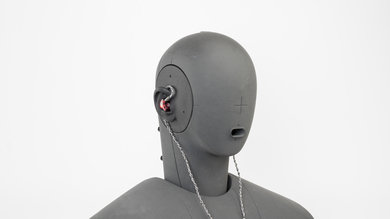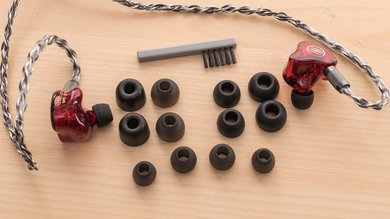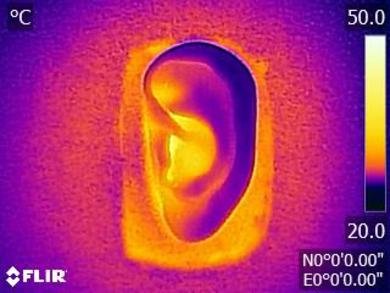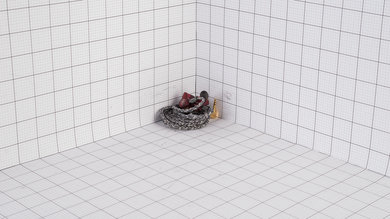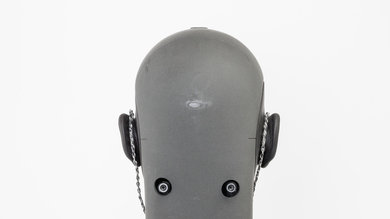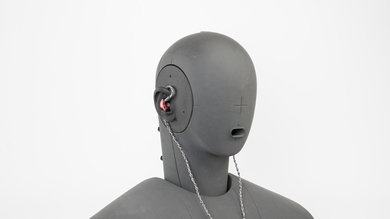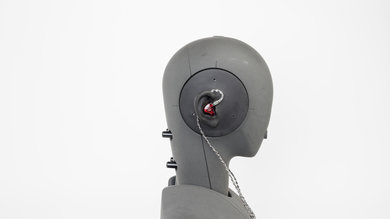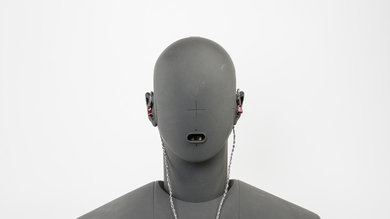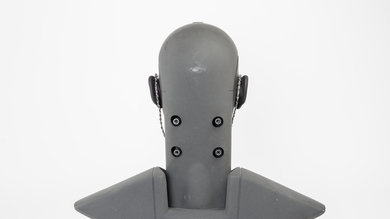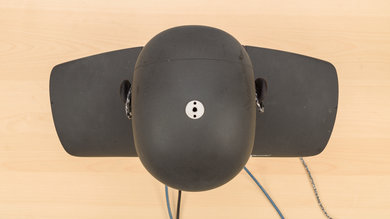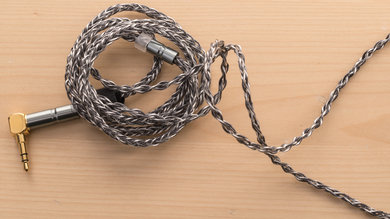The BGVP DM6 are in-ear monitors with a high-end design. They have a nice look, thanks to their transparent earbud casing that lets you see the electronic parts of the headphones. They're well-built and have a very thick, braided, and detachable cable. Unfortunately, their bud design doesn’t fit everyone, and some might have difficulty achieving a decent fit. They also have a warm, boomy sound profile and lack an EQ to help you change their sound. On the upside, when you can achieve a good seal, they isolate a good amount of noise and are fairly comfortable, though they're not ideal for smaller ears.
Our Verdict
The BGVP DM6 are sub-par for mixed use. Their sound is a bit boomy and cluttered, which won’t be ideal for neutral sound. Also, their fit isn’t ideal for smaller ears and won’t be comfortable for long periods. Their isolation is good enough for commuting, but their short cable won’t be great for watching TV from your couch. Since they don’t have a microphone, you also can't communicate during online games. On the upside, their ear-hook design is very stable for sports, and the small buds don’t trap heat inside your ears.
- Durable and stable design.
- Great noise isolation.
- Minimal leakage.
- Slightly bulky earbuds.
- No controls.
- In-ear fit might not be comfortable for everyone.
The BGVP DM6 are okay for neutral sound. They have a boomy bass that adds warmth to your mixes and a fairly even mid-range, but their treble is slightly uneven. However, the mid-range is cluttered and vocals sound a bit thick. They're still fairly versatile but are better suited for bass-heavy genres.
The BGVP DM6 are sup-par for commuting and traveling. While you don’t have to worry about battery life, their in-ear fit might not be comfortable for everyone. However, if you achieve a nice fit and seal, they block a good amount of ambient noise. They're also easy to carry around, but you have to register commands on your phone since they don’t have an in-line remote.
The BGVP DM6 are acceptable for sports. They're small, portable, and their ear-hook design is very stable. You should be able to run and work out without them popping out of your ears. However, they aren’t wireless, meaning that you might have the wire in your way during exercises. They also don’t have an in-line remote to change songs or the volume level.
The BGVP DM6 are middling for office use. Since they put pressure on your inner ear, they can get uncomfortable rather quickly if you have smaller ears, meaning they won’t be suitable to use for a long time during a workday. On the upside, they isolate a good amount of ambient noise and don’t leak much, so you won’t bother surrounding colleagues if you listen at high volumes.
The BGVP DM6 are poor for gaming. Their design won’t be comfortable for long gaming sessions. Also, they don’t have an in-line microphone, so you can't communicate in online games. On the upside, you won’t have any audio delay and won’t have to manage battery life like some wireless gaming headsets. However, you can’t customize them.
Changelog
- Updated Mar 26, 2020: Converted to Test Bench 1.4.
- Updated Nov 21, 2019: Converted to Test Bench 1.3.1.
- Updated Nov 21, 2019: Converted to Test Bench 1.3.
- Updated Mar 27, 2019: Review published.
Check Price
Popular Headphones Comparisons
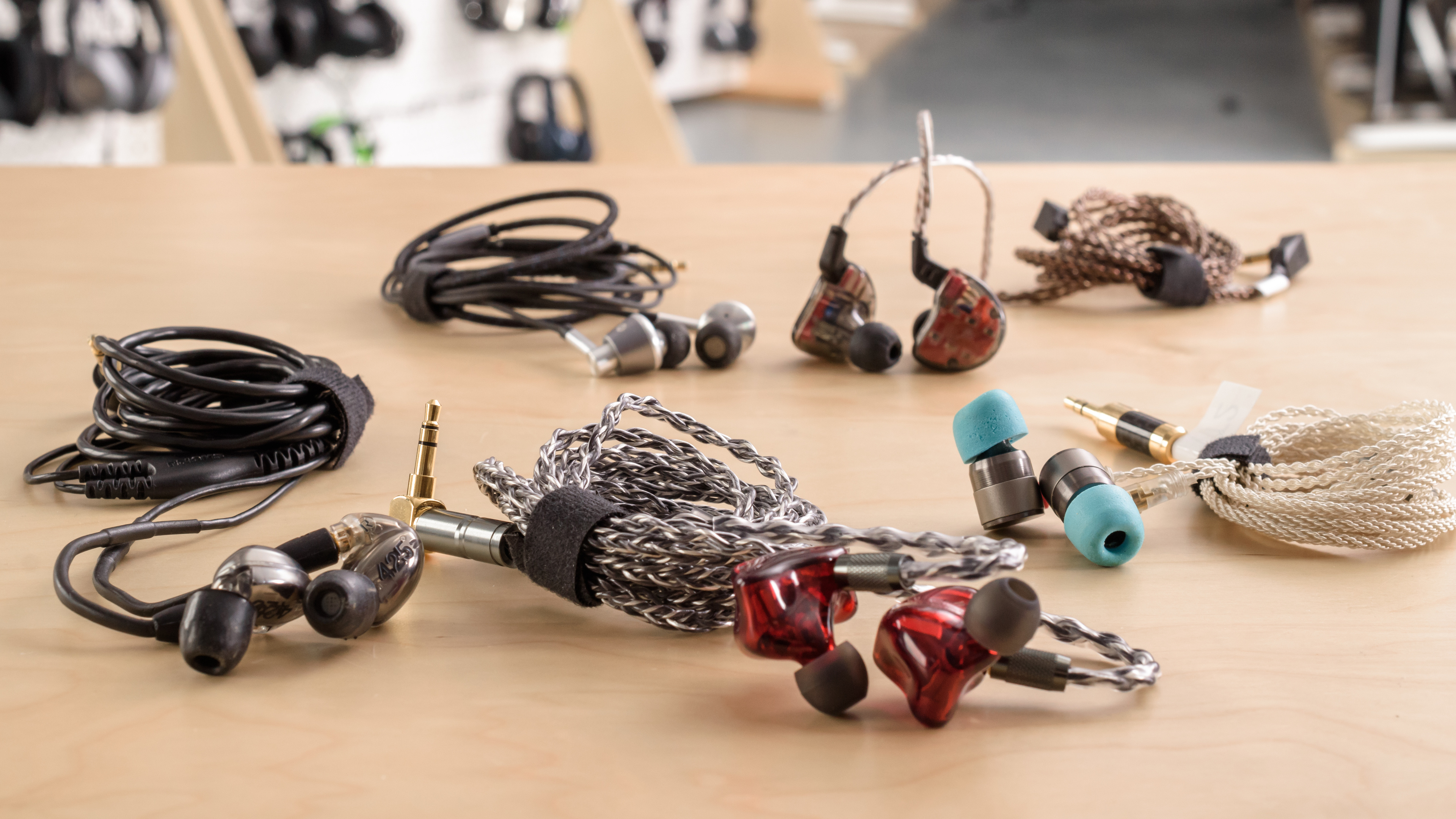
The BGVP DM6 are okay in-ear headphones that set themselves apart by their design and premium build quality. However, their sound quality is disappointing for headphones that are advertised as critical listening IEMs.
See our recommendations for the best earbuds and in-ear headphones, the best wired headphones, and the best cheap earbuds.
The BGVP DM6 and the KZ ZS10 are very similar in design, style, and build quality, but the ZS10 are the better option if you want headphones for neutral sound. While our unit didn’t have one, there is a BGVP variant that has a microphone and in-line controls, which makes them more convenient to use. However, the KZ have better bass accuracy and are more comfortable.
The TIN Audio T2 are better in-ears for neutral sound than the BGVP DM6. The TIN are as well-built as the BGVP and might be a bit more comfortable for some as their bud design is smaller. On the other hand, the BGVP isolate more noise and are a slightly better option for commuting, and their design is more stable once in the ear.
The 1More Triple Driver are better in-ear headphones for neutral sound than the BGVP DM6. The 1More have a more neutral sound profile, which some users may prefer, and their audio cable houses an in-line remote and microphone, which is convenient. The 1More are also more comfortable than the BGVP. However, the BGVP headphones are better-built, feel more high-end, and their ear-hook design is more stable for sports. If you can achieve a nice fit, the BGVP isolate a good amount of ambient noise.
The BGVP DM6 are better headphones than the Shure SE425. The BGVP's sound profile is more neutral, which some users may prefer. They also create a better seal if you can find a decent fit, isolating more against ambient noise. On the other hand, the small design of the Shure fits more people and is very comfortable. They also come with a nice hard case to protect the headphones when you’re not using them.
Test Results
The BGVP DM6 are great-looking in-ears. The bud casing is transparent, which lets you see the electronic parts inside, similar to the KZ AS10. You can also get a more matte black or white finish if you don’t like the transparent look. They look like premium headphones and have a very thick and braided silver cable. The bud housing is bulky, though, and it covers most of your inner ear. The cable also goes behind your ears due to their ear-hook design, and you can choose from multiple colors to fit your preferred style.
These headphones enter your ear canal deeply, which may not be comfortable for everyone. The bulky design of the housing can also put some pressure on your inner ear, and you may experience soreness after a while, especially if you have small ears. However, they're very comfortable if you can get a good fit, but this might be difficult for some. The buds are lightweight, and you barely feel them inside your ears once you get a good fit.
Like most in-ears, the BGVP DM6 are very breathable, and you shouldn’t sweat more when using them since they don’t trap too much heat inside your ear. They should be a good option for sports, thanks to their design, and you shouldn’t notice a big temperature difference when using them.
Like most in-ears, the BGVP DM6 are very portable. Even if they're bulkier than most similar headphones, they can easily fit in pockets or a bag, making them easy to carry around. However, they don't come with a case or pouch for when you’re on the move.
The BGVP DM6 are very well-built in-ears. The buds are dense and should survive accidental drops without suffering too much damage. They also have a great braided, detachable cable, but unfortunately, they don’t come with an extra one in the box. The cable is noticeably thicker than the KZ AS10's but doesn’t necessarily make the headphones more durable. On the upside, it's easy to replace if it gets damaged.
These headphones have a very stable fit, thanks to their ear-hook design. They don’t have physical hooks like the Anker SoundBuds Curve Wireless, but the flexible cable is designed to go behind your ear, and it's covered in a slight plastic coating for comfort. The hooks are very stable, but you have to worry about the cable being in your way when you work out. The cable doesn’t detach easily; this means that if it gets hooked on something, the buds could get yanked out of your ears.
The frequency response consistency is outstanding. If the user can achieve a proper fit and an air-tight seal using the assortment of tips that come with them, they should get consistent bass and treble delivery every time they use the headphones.
The BGVP DM6's bass accuracy is good. They have an underemphasized low-bass, so they lack thump and rumble common to bass-heavy genres like EDM, hip-hop, and dubstep. Mid-bass is fairly neutral, ensuring your mixes have warmth and punch, but the overemphasis in high-bass adds extra boominess to the mix, which some users may find muddy.
The BGVP DM6 have great mid accuracy. The overemphasis in low-mid is the continuation of the high-bass and makes vocals and lead instruments sound thick and cluttered. On the upside, the rest of the response is flat and even, so vocals and lead instruments are present and detailed.
The BGVP DM6's treble accuracy is passable. The response throughout the range is fairly uneven. The dip centered around 3kHz negatively affects the brightness and detail of vocals and lead instruments, while the overemphasis after 6kHz makes some sibilants (S and T sounds) a bit sharp and piercing.
The BGVP DM6's imaging is outstanding. Their weighted group delay is at 0.15, which is excellent. The group delay graph also shows that the entire response is well below our audibility threshold. This ensures a tight bass and a transparent treble reproduction. Also, the L/R drivers of our unit were very well-matched in frequency, amplitude, and phase response. This is important for accurate placement and localization of objects, like footsteps and instruments, in the stereo field. However, these results are only valid for our unit, and yours may perform differently.
The soundstage is bad. This is because creating an out-of-head and speaker-like soundstage is largely dependent on activating the resonances of the pinna. The design of in-ears and earbuds fully bypasses the pinna and doesn't interact with it. Also, because these headphones have a closed-back enclosure, their soundstage won't be perceived to be as open as that of open-back earbuds like the Apple AirPods (1st generation) Truly Wireless, Google Pixel Buds 2017 Wireless, or the Bose SoundSport Free Truly Wireless.
The BGVP DM6's noise isolation is good. In the bass range, where the rumble of airplane and bus engines sits, they achieved about 10dB of isolation, which is poor and may not be enough if you travel a lot. In the mid-range, important for blocking out speech, they reduce outside noise by about 20dB, which is excellent. They're also able to block out a significant amount of high-pitched noise like sharp S and T sounds and the hum of air conditioning systems.
The leakage performance is outstanding. These in-ears don't leak, so there's no need to worry about disturbing the people around you unless you're blasting your music in a very quiet place. With the music at 100dB SPL, the leakage at 1 foot away averages at 23dB SPL and peaks at 31dB SPL, which is way below the noise floor of an average office.
These wired headphones are not Bluetooth compatible. Like most in-ear headphones, the BGVP DM6 practically don’t have any latency and will be great for watching videos and gaming.
These headphones don’t have a dock. If you're looking for headphones with a dock for customization options, look at the SteelSeries Arctis Pro Wireless. If you want a charging dock, look at the Astro A50 Gen 3 Wireless 2017. However, these options won't be as portable as the BGVP DM6.

